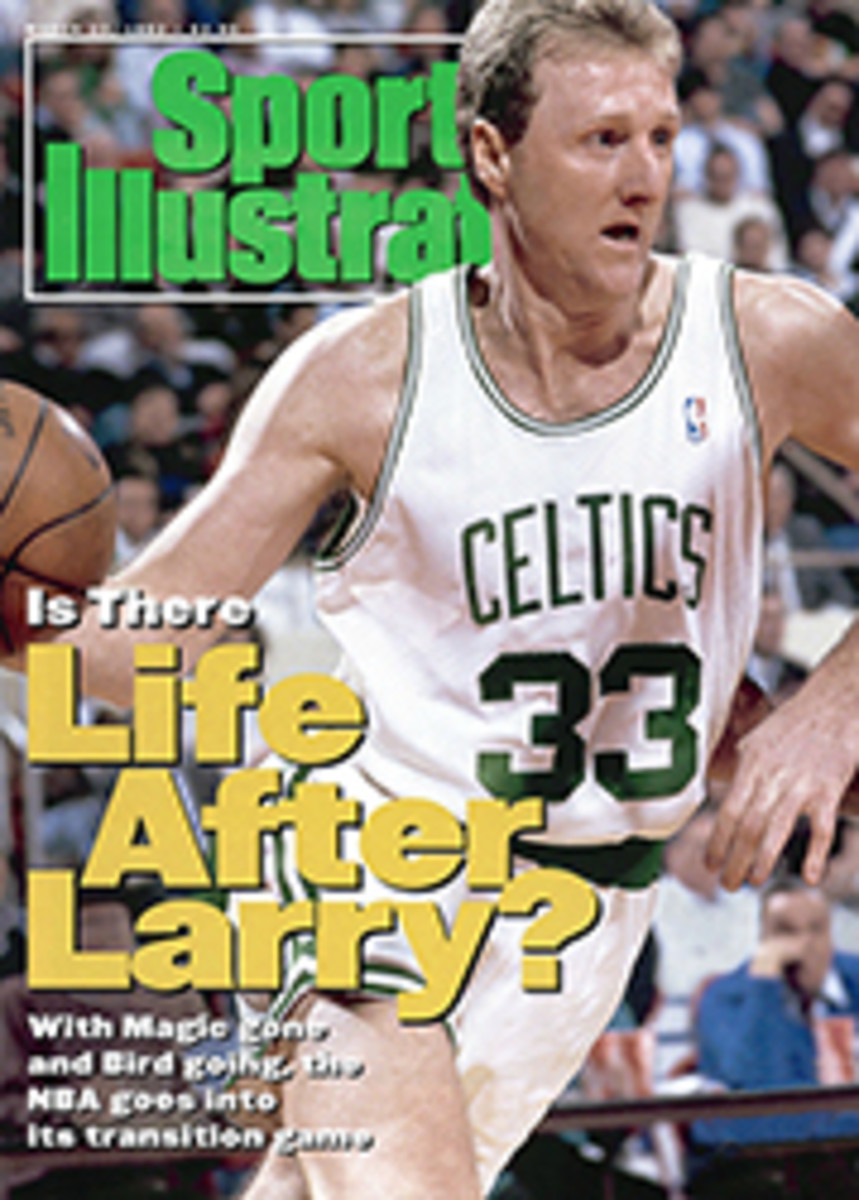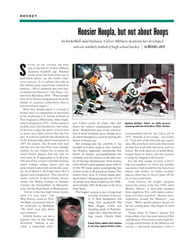
Skating a Thin Line
Waves of Chicago Blackhawk fans stream across Warren Street for a Sunday night game at Chicago Stadium against the Minnesota North Stars. But before entering the arena, many of them have one crucial stop to make. They push past the ticket scalpers and peanut vendors and seek out the young men in white barbecue-style aprons who are near—but not too near—the stadium gates. The fans fork over a dollar each and in return receive The Blue Line, a renegade Blackhawk program with a Spy magazine 'tude.
"I live by it," says one Hawk diehard. His name is Scott Smith, though the back of his team jersey reads L. (for Lord) STANLEY. "The Blue Line doesn't kiss up to team management." That's an understatement. The six-page glossy program is notable for two things: its up-to-the-game stats and its frat-boy tone. The Blue Line is right at home in Chicago, where bashing the hockey team's owner and its coach is something of a civic pastime.
The Blue Line has attempted to raise ridicule to an art form. Its Halloween edition included a SCARE ALL YOUR NEIGHBORS! bonus pullout: a life-sized trick-or-treat mask of Blackhawk coach Mike Keenan. "I loved that," says fan Terri Powell, who is entering the stadium wearing a red silk Hawk jacket that has been autographed by every player. Another Blue Line spoof sought to start a legal fund to help owner Bill Wirtz fight his Nov. 29 speeding and driving-under-the-influence arrest. One reader sent a $10 check.
The Blue Line, which debuted last season, is the unruly offspring of Chicagoans Mark Finch, 30, and Mark Weinberg, 29. Friends since kindergarten, they found themselves out of work in 1990—a harmonic convergence of sorts. With time to follow their peculiar dream, they decided to launch The Blue Line that November.
Working out of their respective bachelor pads, they drafted a premier issue that looked about as slick as a Chinese takeout menu. The "printing" was accomplished at a local restaurant, which permitted the use of its copier in exchange for ad space. Recalls Finch, who has a master's degree in newspaper management from Northwestern, "We were down in the wine cellar on game days, taking turns sleeping in the corner while the other copied."
They soon learned that there were even harsher aspects to launching a publication, particularly in distribution. Finch and Weinberg were regularly hassled by the police; Weinberg was once hauled off to the slammer for impeding pedestrian traffic. Says Weinberg, a graduate of the University of Chicago Law School, "At least that degree got some use."
Although Blackhawk officials didn't like the rag from the start, Blackhawk fans did. Finch and Weinberg kept bumping up their press run—from 500 originally to 800 by March of '91 to 1,200 per game when the Line began its second season last fall—and found that each new high still wasn't high enough. Before long they were clearing more than $1,000 a week and had raised enough capital to invest in desktop publishing.
Emboldened by success, The Blue Line became ever more outrageous—too outrageous, finally, for Finch. He and Weinberg argued vehemently over content and other matters during an editorial meeting on New Year's Day, and Finch quit.
Flying solo, Weinberg has continued to steer the program close to that thin line between a fair shot and a cheap shot. "There is an underbelly to this sport," he says. "Maybe it's the game's overt violence, but fans tend to be antiauthority. That's one reason why this works."
Keenan, for one, doesn't think The Blue Line works at all. "Distasteful," he calls it. Considering that the Line once ran a photo of him over a toilet seat, along with the caption CANNING KEENAN, his reaction is unsurprising, even diplomatic.
Certainly The Blue Line's irreverence is one factor in its success. Another is its status as a statistics service. The official program sold at Chicago Stadium, Goal, contains no stats, while those in The Blue Line are absolutely up-to-date. What's more, the margins are filled with bits of arcana that are of interest to trivia buffs.
Weinberg prints not only player salaries but a "fight card" as well, detailing which of that evening's combatants have squared off in the past, what injuries were inflicted—bloody nose, black eye, bruised ego—who won and whether by decision or TKO. "At the stadium," says Blue Line buyer Kent Novit, "you need to know more than the guy sitting next to you."
With his finger on the pulse of fans like Novit, Weinberg plans to put out a baseball program this summer. "I will take over the world with this idea," he says.
PHOTO
GWENDOLEN CATES
Editor and publisher Weinberg ponders his next outrage.
Lisa Twyman Bessone is a free-lance writer thing in Chicago and a regular contributor to SI.

